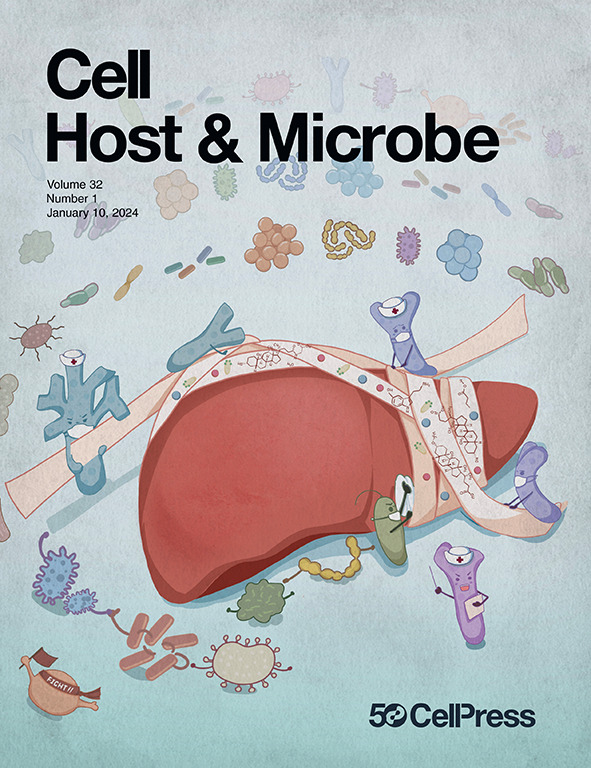Epithelial cells provide immunocompetence to the early embryo for bacterial clearance
IF 18.7
1区 医学
Q1 MICROBIOLOGY
引用次数: 0
Abstract
Early embryos are exposed to environmental perturbations that may influence their development, including bacteria. Despite lacking a proper immune system, the surface epithelium of early embryos (trophectoderm in mammals) can phagocytose defective pluripotent cells. Here, we explore the dynamic interactions between early embryos and bacteria. Quantitative live imaging of infection models developed in zebrafish embryos reveals the efficient phagocytic capability of surface epithelia in detecting, ingesting, and destroying infiltrated E. coli and S. aureus. In vivo single-cell interferences uncover actin-based epithelial zippering protrusions mediating bacterial phagocytosis, safeguarding developmental robustness upon infection. Transcriptomic and inter-scale dynamic analyses of phagocyte-bacteria interactions identify specific features of this epithelial phagocytic program. Notably, live imaging of mouse and human blastocysts supports a conserved role of the trophectoderm in bacterial phagocytosis. This defensive role of the surface epithelium against bacterial infection provides immunocompetence to early embryos, with relevant implications for understanding failures in human embryogenesis.

上皮细胞为早期胚胎提供清除细菌的免疫能力
早期胚胎暴露在可能影响其发育的环境扰动中,包括细菌。尽管缺乏适当的免疫系统,早期胚胎的表面上皮(哺乳动物的滋养外胚层)可以吞噬有缺陷的多能细胞。在这里,我们探索早期胚胎和细菌之间的动态相互作用。斑马鱼胚胎感染模型的定量实时成像揭示了表面上皮在检测、摄取和破坏浸润的大肠杆菌和金黄色葡萄球菌方面的有效吞噬能力。体内单细胞干扰揭示基于肌动蛋白的上皮拉链突起介导细菌吞噬,保护感染后的发育稳健性。吞噬细胞-细菌相互作用的转录组学和尺度间动态分析确定了这种上皮吞噬程序的特定特征。值得注意的是,小鼠和人类囊胚的实时成像支持滋养外胚层在细菌吞噬作用中的保守作用。这种表面上皮抵抗细菌感染的防御作用为早期胚胎提供了免疫能力,这对理解人类胚胎发生失败具有相关意义。
本文章由计算机程序翻译,如有差异,请以英文原文为准。
求助全文
约1分钟内获得全文
求助全文
来源期刊

Cell host & microbe
生物-微生物学
CiteScore
45.10
自引率
1.70%
发文量
201
审稿时长
4-8 weeks
期刊介绍:
Cell Host & Microbe is a scientific journal that was launched in March 2007. The journal aims to provide a platform for scientists to exchange ideas and concepts related to the study of microbes and their interaction with host organisms at a molecular, cellular, and immune level. It publishes novel findings on a wide range of microorganisms including bacteria, fungi, parasites, and viruses. The journal focuses on the interface between the microbe and its host, whether the host is a vertebrate, invertebrate, or plant, and whether the microbe is pathogenic, non-pathogenic, or commensal. The integrated study of microbes and their interactions with each other, their host, and the cellular environment they inhabit is a unifying theme of the journal. The published work in Cell Host & Microbe is expected to be of exceptional significance within its field and also of interest to researchers in other areas. In addition to primary research articles, the journal features expert analysis, commentary, and reviews on current topics of interest in the field.
 求助内容:
求助内容: 应助结果提醒方式:
应助结果提醒方式:


